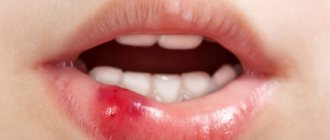Before you get vaccinated
Taking into account the fact that in the vast majority of cases, vaccinations are well tolerated by healthy children without any preparation or pre-treatment, the most important point in preparing a child for vaccination is to determine contraindications to vaccinations, that is, those cases of illness in a child in which vaccination can give serious adverse reactions. Contraindications and precautions for vaccination; in some cases, vaccination in children is either strictly prohibited or should be postponed to a later date. In order to correctly assess contraindications and precautions for vaccination in a child, it is important to follow the vaccination calendar and know in advance which vaccination should be given to the child and when. Before vaccinating your child and on the day of vaccination, read what contraindications and precautions are associated with the administration of a particular vaccination and make sure that the child does not have any contraindications for the vaccination. If you find it difficult to determine certain contraindications or precautions (for example, how dangerous a child’s cold or cough is), show it to your doctor. You should not blindly refuse vaccination because of a slight runny nose or cough - this will only disrupt the vaccination plan.
Go for a walk!
WHY DO YOU NEED TO WALK?
Purely theoretically, all parents understand that walks mean fresh air and health, but let’s look at what getting out of a warm apartment or house gives us. By and large, any walk is contact with nature (if, of course, you are not walking along busy streets, but at least in a park) and an attempt to get away a little from the harmful factors of civilization. What does it mean? Every city apartment (and country house too) accumulates a huge amount of harmful substances. First of all, this is dust and a variety of allergens (particles of household chemicals, varnishes, paints), which are always present in furniture, books, carpets and in general in any objects in our home. Plus all the street trash that flies through the windows if it’s a city apartment. But there is no or very little fresh air in our homes, because in winter it is difficult to keep the windows open and constantly ventilate the room. There is also no sunlight in our homes - useful UV radiation, which is necessary for the growth of all living things. And finally, sitting at home, we sharply limit our physical activity. Therefore, it is clear that everyone, including children, needs to go out into the fresh air and take a walk. Of course, walking in summer is more pleasant than in winter: it’s warm, the birds are singing, the grass is turning green, the flowers are blooming, and somehow it immediately becomes clear that walking is both pleasant and useful. What about in winter? Cold, snow, monotonous landscape - all this is uncomfortable, so where is the benefit of winter walks?
WHAT WILL A WINTER WALK GIVE A CHILD:
1. Health.
In cold weather, the air becomes cleaner and richer in oxygen, and all dust is trapped by snow. Fresh air will clear the lungs of everything that the baby inhales in the apartment, the mucous membranes of the respiratory tract will begin to work better, and the blood and, accordingly, all organs will be enriched with oxygen. While walking, the child will grow and develop physically better.
2. Hardening.
The air temperature during a walk in winter is significantly different from the air temperature in the room - all this will harden the baby’s body.
3. Vitamin D
In winter there is very little sun and a walk is the only opportunity for a child to get a “portion” of ultraviolet radiation. Namely, under its influence, our body produces vitamin D, which is necessary for the prevention of rickets. Of course, to prevent rickets, you will need to do more than just walk, but it’s still worth using this simple and natural “cure.”
4. Physical activity.
Walking in winter, when we are wearing a lot of clothes, especially if we move actively, we spend more effort and energy. The baby also spends it, even if he just moves his legs along the road, digs snow, rolls over a snowdrift, or slides down a hill with his parents. So a winter walk, willy-nilly, gives us physical activity, and this, in turn, stimulates the functioning of the cardiovascular and immune systems. It turns out that there are again health benefits.
5. Development and socialization.
On the street the world is completely different than in a child’s usual apartment or house. It’s full of all sorts of amazing things for children: it’s snowing or the sun is shining, a dog is running, a crow is cawing, a car is passing by. Moreover, all this changes very quickly: the baby constantly sees a new picture and receives new information, studies the properties of different objects. While walking, children learn to establish different connections: a dog barks, a bird flies, and the snow is white and beautiful. Plus communication with other children and new contacts. Well, yes, in the warm season there is more street entertainment, but don’t sit in your apartment until the snow melts!
Of course, not all of these factors will work on every walk: the sun does not always shine, and as for infants, they often sleep outside and have no movement or special familiarization with the outside world. But winter walks definitely provide health and strengthening, if, of course, you walk in the fresh air, and not along polluted streets or shops full of people.
WHY DON'T THEY WALK?
True, no matter how much they talk about the benefits of winter walks, still at this time of year many mothers and fathers with their children do not walk or walk rarely or for a short time. Adults understand that this is wrong, but the reasons for staying at home seem convincing to them. What parents tell themselves:
The child will get sick in the cold.
This is a typical horror story that mothers and grandmothers especially love: they say that a child will breathe in the air in the cold and he will start to cough, runny nose or have a sore throat
.
But cold air does not cause illness - this is a myth.
In fact.
A person gets sick from bacteria or viruses, not from cold. On the contrary, many viruses die in the cold, so walking at sub-zero temperatures is safer than at above-zero temperatures. Another thing is that hypothermia (frozen feet, for example) can cause a virus or microbe that has entered the body to begin to develop. Well, you just shouldn’t allow it (hypothermia).
There are only infections on the street
. Now that we have been bombarded with a flood of all kinds of negative information, in particular about all sorts of viruses and diseases, many anxious mothers are generally afraid to go outside with their small children again. Especially in the first weeks and even months after birth if the child was born in the fall and winter. It is believed that a baby might be sneezed on on the street, or a virus could be left behind in a hallway by a sick person, and the child would catch it. Endless media horror stories about new and terrible strains of influenza, daily news about severe complications from illnesses and other horror stories only add fuel to the fire. So mothers and children sit at home all winter and only walk on the balcony.
In fact.
An apartment will not protect against diseases—a father, grandmother, or mother herself can bring a virus into the house: a family does not live in complete isolation from the world. But a walk in the fresh air, on the contrary, will strengthen your health and immunity.
Walking in winter is so difficult and boring.
In winter, you need to dress for a long time: first yourself, and then dress your child in several layers of clothes. Moreover, you need to dress for the weather, otherwise you will quickly freeze and have to return. The question arises: why did they go out at all? And you also have to not forget anything (the same mittens), otherwise, again, you have to return home, and this is always inconvenient with a small child. In addition, many babies do not tolerate the process of dressing well: they scream so much that it is easier to skip the walk and stay at home. It’s cold in winter, you can’t sit on a bench with a stroller, you can’t read a book, you have to walk all the time. Plus, many parents are generally bored of walking with a stroller or hand in hand with a child, even if the weather is good and the baby is calm.
In fact.
These are all excuses and plain laziness. Today there are so many high-tech and comfortable clothes (for both adults and children) that dressing for a walk can be easy and comfortable. Children very quickly get used to the process of dressing or simply resign themselves to it. If you try a little, you can find something interesting even while walking with a stroller (listen to audiobooks, music, communicate in the company of other mothers).
The child will freeze or, conversely, overheat
. In winter, you need to put a lot of clothes on the baby, but it’s difficult to understand exactly whether the feet are cold or, on the contrary, whether the baby has mated.
In fact
. Usually parents dress the child so warmly that he definitely does not freeze. Even if the baby is lying in a stroller, you can always feel his arms and legs and determine if they are cold. Much more often, a child feels hot during a walk, and you can tell about this by his appearance and behavior. The baby's face turns red, he begins to worry (is naughty or cries), and asks for a drink. Then you need to put your hand behind the baby’s collar and feel his back (if it is sweating).
The child will want to eat, but in winter you won’t be able to breastfeed outside
. Therefore, it’s better not to go out for a walk, especially since if you go out, you won’t be gone for long anyway.
In fact
. You can feed the baby before the walk. Then you are guaranteed to have 1–1.5 hours to go outside and get some fresh air. And this is quite enough for a winter walk. In general, children fall asleep quickly outside in winter and then sleep for a very long time. So there is usually enough time to walk between feedings.
Bad weather in winter
– if not a snowstorm, then ice, if not frost, then slush.
In fact.
Bad weather in winter, unless a person lives in really difficult climatic conditions, still happens infrequently. Snowstorms do not blow all winter, and severe cold is replaced by light and pleasant frost, so most often the same parental laziness is hidden under the words “bad weather”. Or the lack of habits for a healthy lifestyle and walking in particular. Plus, at home we are anchored by the usual comforts: a soft sofa, a TV, a computer.
It turns out that there are no particularly serious reasons not to walk with your child in winter. But here, too, we must observe moderation. There is no need to perform heroic deeds or go for a walk in the name of your baby’s health if you don’t have the strength, food isn’t ready for yourself or your husband, the weather is bad outside, or something just went wrong today. Nothing bad will happen if the child stays at home for one or even a couple of days. But as soon as the weather gets better and you have strength, you need to go outside. What about the balcony? To be honest, everyone understands that a walk on the balcony is not the same as a walk in the park or forest. This is a solution for those who live in a house without an elevator, who don’t have at least a public garden nearby, if it’s very cold and bad weather outside, if their mother doesn’t feel well or is very busy with household chores or work.
GOING OUTSIDE
When to start.
If a child was born in winter or cold spring or autumn, then in the first days after birth he does not need to go for a walk. And not only because it’s cold outside, the baby just needs to first adapt to the outside world, both he and the mother need to enter a new rhythm of life. In general, pediatricians have different opinions about when to start walking with a newborn. Some doctors believe that a healthy child can be taken outside in the winter within a week after birth, others recommend walks from the 10th to 14th day of life, while others generally advise waiting until three to four weeks. Here you will need to look at everything: the child’s weight (underweight children are advised to start going out later in winter), his condition, the weather, the family’s capabilities (the mother may not have the strength, the father works, and there are no grandmothers nearby).
At what temperature and for how long to walk.
Here you also need to pay attention to the weather. Doctors recommend taking a newborn out for the first walk if the temperature outside is not lower than minus 5 ºС. At first, you don’t even have to go outside, but take a “walk” with your dressed baby in a room with a wide open window or sit on the balcony. Then leave the house with the baby holding him in your arms, and then take a walk in the stroller.
Every day the walk is increased by about 5–10 minutes, and it turns out that after going outside on average 10 days, by the month the child can already walk for an hour, and then 1.5–2 hours. But here again we need to look at the climate. It may be 0 ºС or even plus outside, but a strong north wind will blow - walking in such weather is unpleasant and unnecessary. Or maybe the frost is below minus 15 ºС, and the day is sunny, the weather is mild - then the numbers on the thermometer will not interfere with a walk in the fresh air.
How to dress a child
. As mentioned earlier, everything is simple with clothes now. Woolen leggings that still need to be pulled on, numerous scarves under a hat, heavy children's fur coats, just socks and second socks on top, scarves to stop the wind, and other grandmother's tricks for warmth are a thing of the past. It's simple: a child is walking in a stroller - a cotton overall (slip) to the body, a fleece one on top, and then an overall or envelope with insulation. A cotton helmet is placed on your head, and a wool or fleece helmet is placed on top of it (or you can wear a “2 in 1” helmet). Socks on your feet, mittens on your hands. If you are very scared, take a blanket (just in case). If the child is already walking, everything is the same, but instead of an envelope there will already be overalls and plus winter children's shoes. And no extra buttons, ties or anything else that irritates both mother and child. Slips with convenient buttons, overalls (envelopes) with a zipper, instead of a stuffy scarf, a helmet hat will cover your neck, scratchy wool has been replaced with soft and pleasant fleece - you can get ready for a walk in such comfortable clothes, like in the army, in a few minutes! Before you go out for a walk, you must first collect all the necessary things (napkins, pacifiers, toys), then get dressed yourself, and last but not least, dress the child (otherwise he will quickly get hot).
As you can see, walking in winter is not difficult and even very useful. So dress right and get going.
–
towards nature and health!
Treatment of fever and prevention of allergies after vaccination
An increase in temperature is a normal reaction of the child’s body to a vaccination, which means that the immune system has responded to the vaccine and is beginning to develop immunity (however, the absence of an increased temperature after vaccination does not mean that the vaccination was ineffective). In the case of completely healthy children, the temperature should not be lowered after vaccination if it does not exceed 38.5C. In cases of a more significant increase in temperature, and also when the temperature remains at 38.5 C in the evening, the child should be given an antipyretic. To treat fever after vaccination, it is recommended to use Paracetamol. Aspirin should never be used as an antipyretic in children.
In the case of children with a tendency to febrile convulsions, treatment should be started when the temperature rises above 37.5 or the child should be given an antipyretic before the temperature appears, if so advised by the neurologist observing the child.
Prevention of allergic reactions after vaccinations is indicated only in the case of children prone to developing allergies. In such cases, it is recommended to use Suprastin or another antihistamine as prescribed by a doctor.
How to reduce fever during teething?
Today in the pharmacy you can find many antipyretic drugs that are intended for very young children and come in the form of suppositories or syrups.
For children, drugs based on ibuprofen or paracetamol are most often used. After you have given your baby an antipyretic, be patient and do not expect a quick effect; as a rule, the temperature begins to decrease gradually after 45 - 60 minutes.
Do not rely on the opinions of acquaintances and friends when choosing an antipyretic drug for children; always follow the instructions and pay attention to the baby’s behavior. Only medications recommended by pediatricians for infants and young children; strictly follow the single and daily dose indicated in the instructions, which depends on the age of the baby and its weight.
We were glad to answer your questions. Be healthy! Make an appointment with our pediatric dentist at the Dental Practice
Treatment of redness and swelling at the injection site
Most vaccinations result in more or less severe redness or swelling at the injection site. The most severe local reaction to vaccination is observed in the case of DTP (redness, swelling and pain at the injection site) and BCG (formation of a long-lasting non-healing ulcer). For all types of vaccinations, it is recommended to avoid any local treatment for redness or swelling at the injection site. If the child scratches the injection site, it can be covered with a light gauze bandage. At the site of the DTP, a compaction often forms, located deep in the muscle - a “bump”. Often such a lump is painful, and the child easily limps on one leg (if the vaccine was injected into the thigh). The formation of a dense “bump” after DPT is considered a normal reaction and does not require any treatment. Within a few weeks, the lump will resolve on its own.










